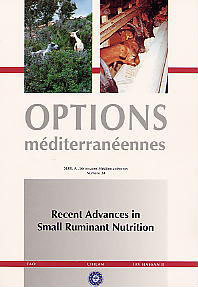| Article précédent | p. 53-57 | Article suivant |
How do I cope with that bush?. Optimizing less palatable feeds at pasture using the MENU model
To learn how to use rangelands profitably, livestock farmers must have a clear understanding of how they can influence herd behaviour (using external appetite-stimulating factors) to make the animals consume diets consistent with targeted production objectives with minimum external inputs. The feed value of rangelands results to a large extent from the feeding management which can take advantage of the heterogeneity of pastoral areas (MENU model), a factor usually considered as a structural constraint. The overall palatability of each intake component may be considered to result from its intrinsic palatability (i.e., mainly related to metabolic regulations linked to the digestion process) and from its circumstantial palatability (derived from previous learning by the animals and from the grazing conditions). This leads to characterising the specific roles assigned to individual paddocks in the daily feeding process and dispensing with the 'pastoral potential' concept, of little operational value in our conditions. Taking account of the foraging herd's behavioural responses poses new questions to nutrition scientists about the time dimension involved in the feeding process: the short-term effects of interactions between different feeds, of meal sequences during the day, of feed shifts between the grazing seasons and even the long term effects of behavioural learning.
- [ Télécharger ]
- [ Exporter la citation ]
Vous pouvez télécharger la citation au format :
- [ Imprimer ]
- [OMA34]




